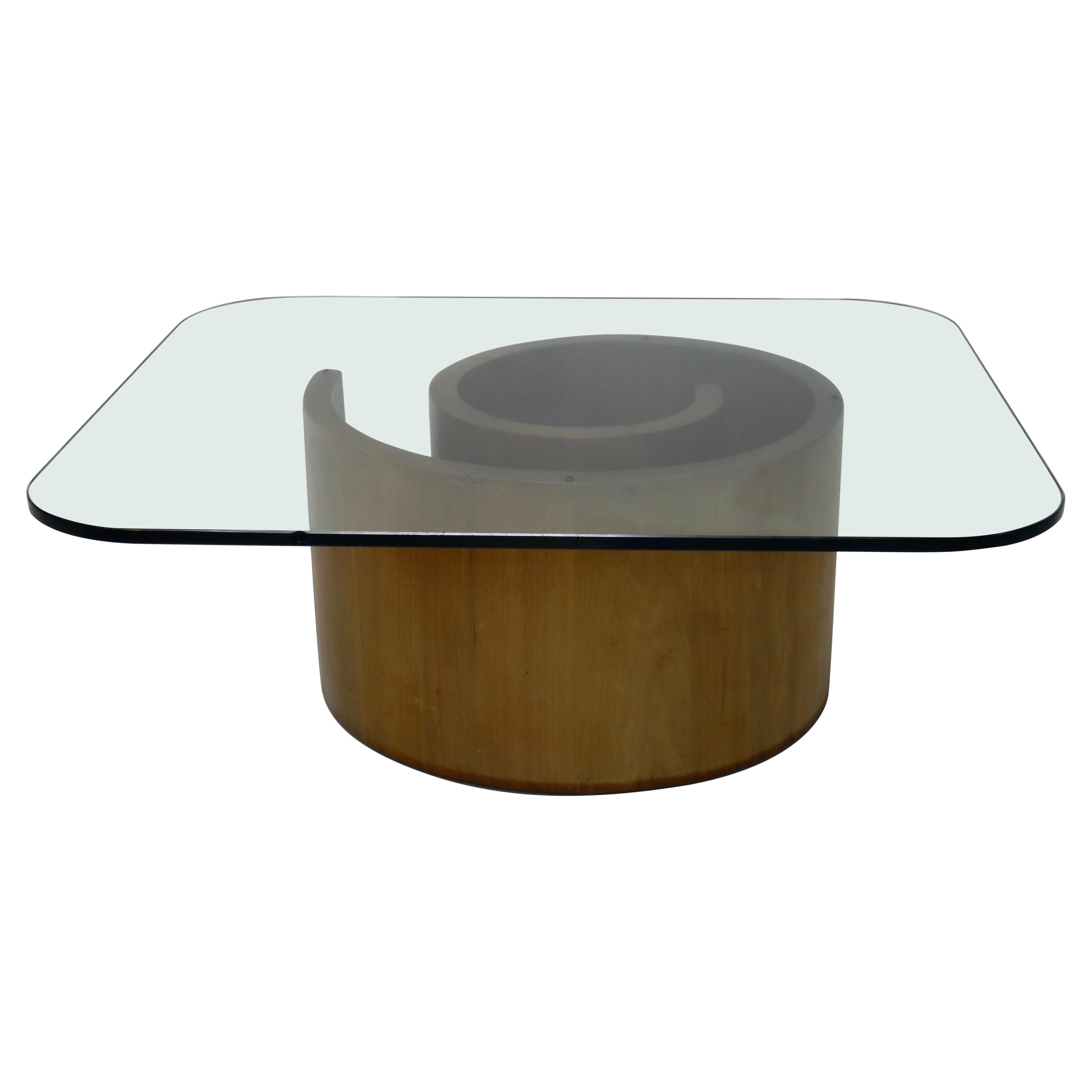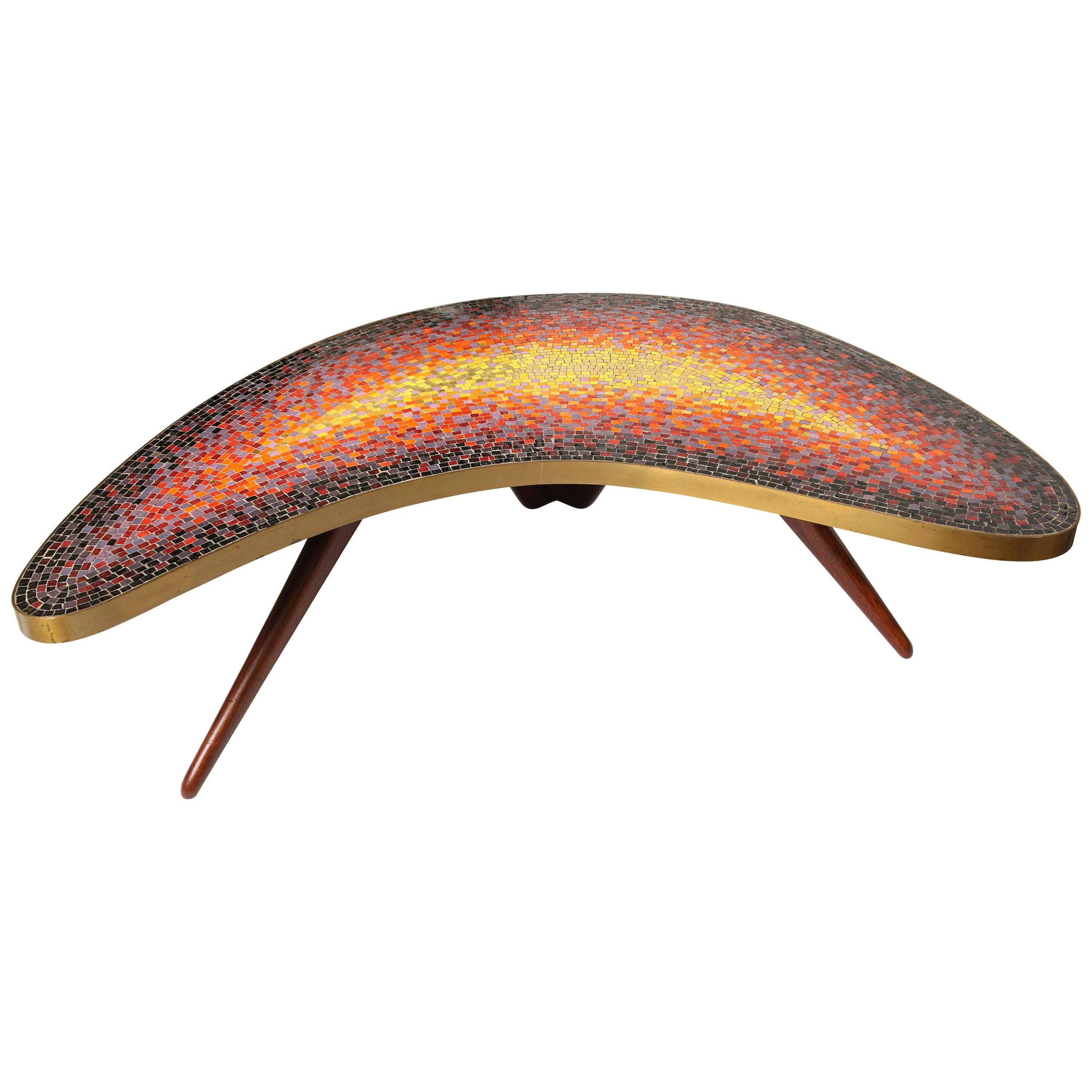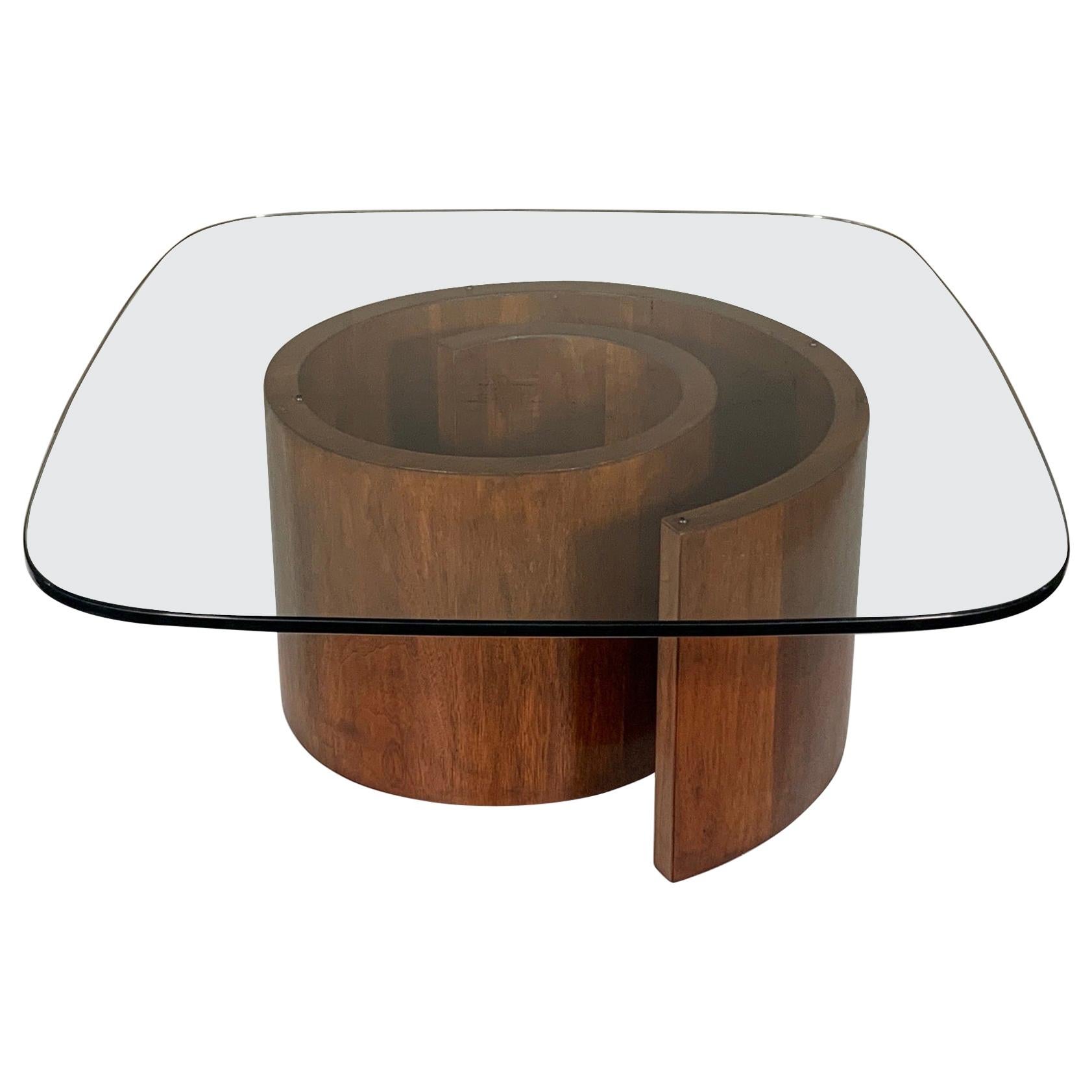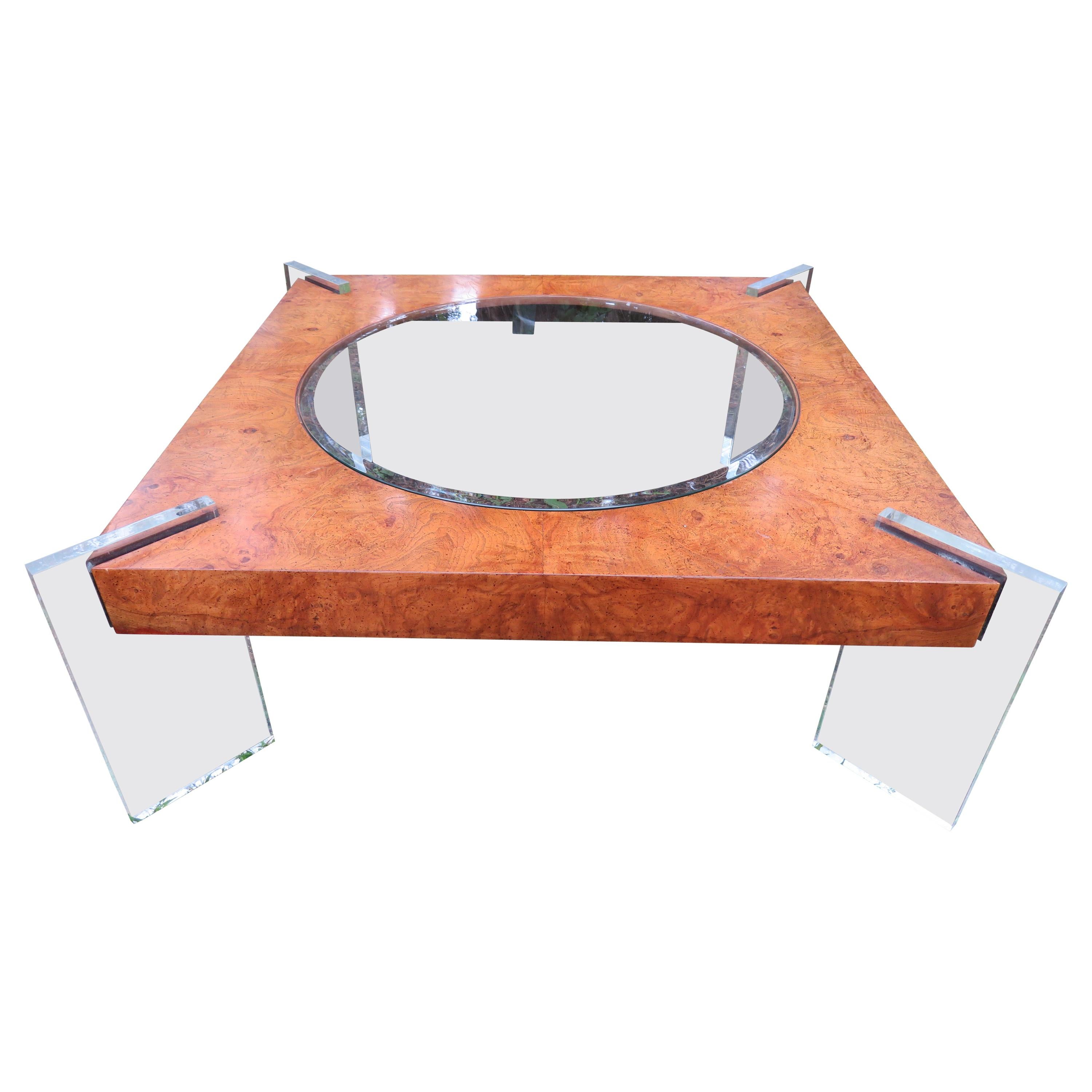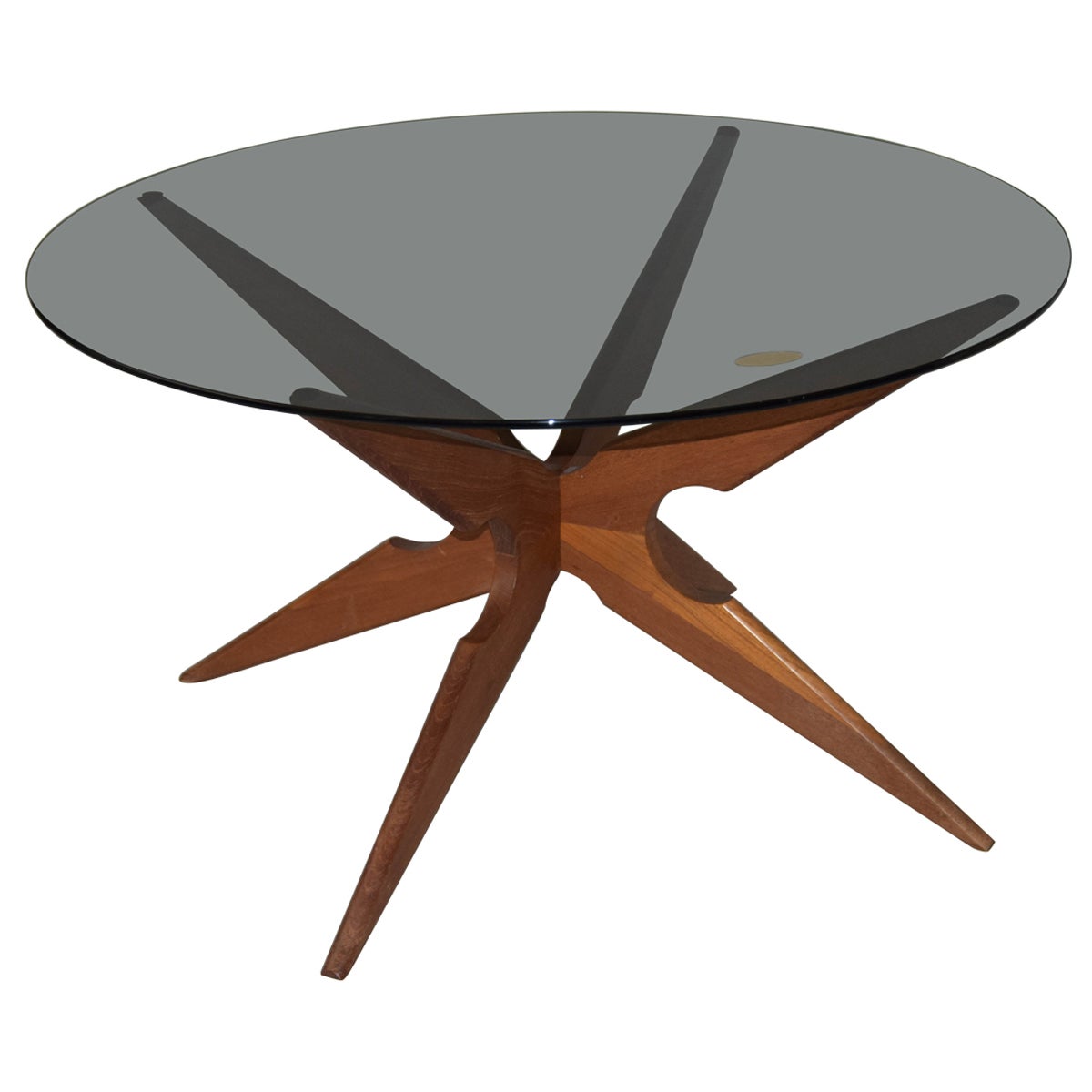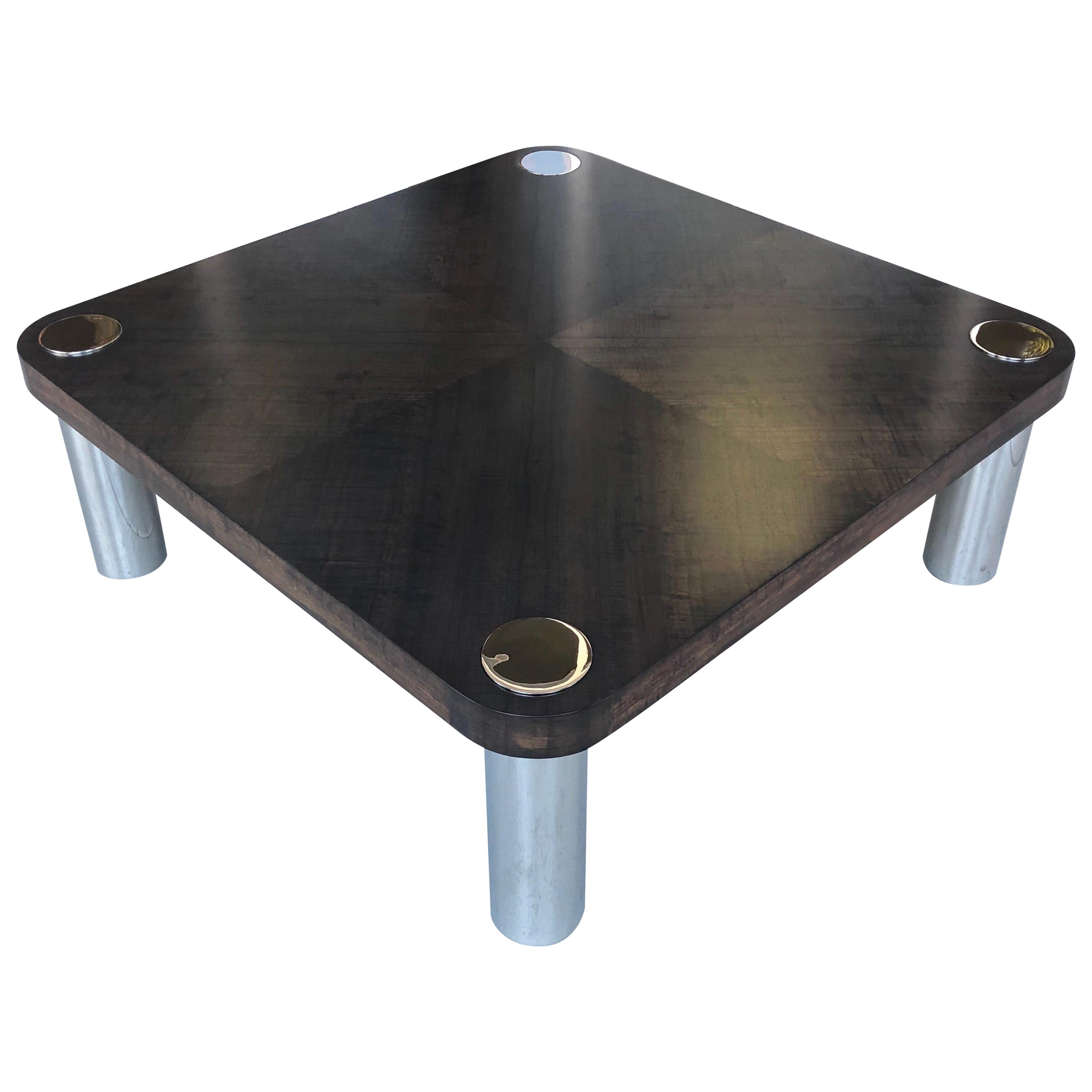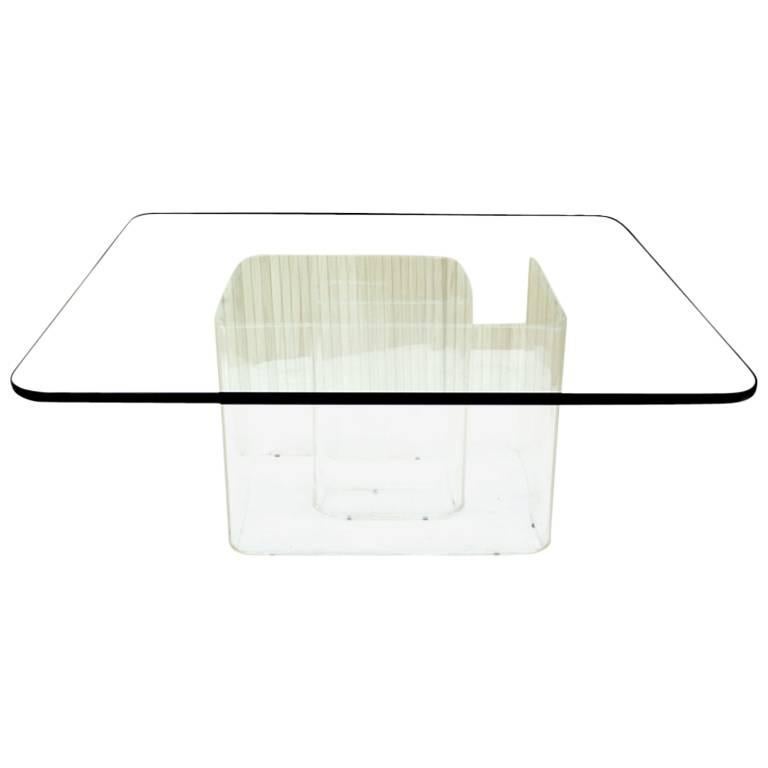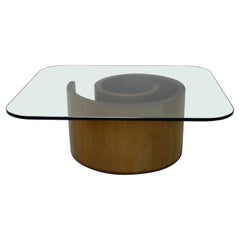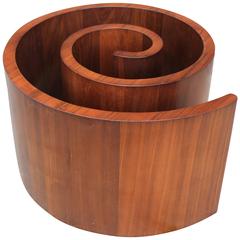
Vladimir Kagan Snail Coffee Table Base
View Similar Items
Vladimir Kagan Snail Coffee Table Base
About the Item
- Creator:Vladimir Kagan (Designer)
- Dimensions:Height: 14 in (35.56 cm)Width: 22.25 in (56.52 cm)Depth: 25 in (63.5 cm)
- Style:Mid-Century Modern (Of the Period)
- Materials and Techniques:
- Place of Origin:
- Period:
- Date of Manufacture:1960s
- Condition:Wear consistent with age and use.
- Seller Location:Hudson, NY
- Reference Number:1stDibs: LU92007911383
Vladimir Kagan
The pioneers of modern furniture design in America in the mid-20th century all had their moments of flamboyance: Charles and Ray Eames produced the startling, biomorphic La Chaise; George Nelson’s firm created the Marshmallow sofa; Edward Wormley had his decadent Listen to Me chaise. But no designer of the day steadily offered works with more verve and dynamism than Vladimir Kagan. While others, it seems, designed with suburban households in mind, Kagan aimed to suit the tastes of young, sophisticated city-dwellers. With signature designs that feature sleekly curved frames and others that have dramatic out-thrust legs, Kagan made furniture sexy.
Kagan’s father was a Russian master cabinetmaker who took his family first to Germany (where Vladimir was born) and then to New York in 1938. After studying architecture at Columbia University, Kagan opened a design firm at age 22 and immediately made a splash with his long, low and sinuous Serpentine sofa. Furniture lines such as the Tri-symmetric group of glass-topped, three-legged tables and the vivacious Contours chairs soon followed.
Kagan’s choices of form and materials evolved through subsequent decades, embracing lucite, aluminum and burl-wood veneers. By the late 1960s, Kagan was designing austere, asymmetrical cabinets and his Omnibus group of modular sofas and chairs. For all his aesthetic élan, Kagan said that throughout his career, his touchstone was comfort. “A lot of modern furniture was not comfortable. And so comfort is: form follows function. The function was to make it comfortable,” he once commented. “I created what I called vessels for the human body.”
A diverse group of bodies have made themselves at home with Kagan designs. Among the famous names who commissioned and collected his designs are Marilyn Monroe, Gary Cooper, Andy Warhol, David Lynch, Angelina Jolie and Brad Pitt, and firms such as Gucci and Giorgio Armani. His work is in numerous museum collections, including those of the Victoria & Albert and the Metropolitan Museum of Art.
Because of its idiosyncrasy, Kagan’s work did not lend itself to mass-production. Kagan never signed on with any of the major furniture-making corporations, and examples of his designs are relatively rare. As you will see from the offerings on 1stDibs, even decades after their conception, Kagan pieces still command the eye, with their freshness, energy, sensuality and wit.
- Vladimir Kagan Snail TableBy Vladimir KaganLocated in New Haven, CTThis iconic design by Vladimir Kagan of his snail coffee table is handmade. Original unaltered walnut Veneer. Sold by Selig. The coffee table base is shown without the glass top. Not...Category
20th Century American Mid-Century Modern Coffee and Cocktail Tables
MaterialsWalnut
- Vladimir Kagan Coffee TableBy Vladimir KaganLocated in San Francisco, CAA Vladimir Kagan "Snail" coffee table made of a walnut veneer base with original rectangular glass top.Category
Vintage 1950s Mid-Century Modern Coffee and Cocktail Tables
MaterialsGlass, Walnut
- Vladimir Kagan Mosaic Glass Coffee TableBy Kagan-Dreyfuss, Inc.Located in West Palm Beach, FLA rare example of the Venetian Mosaic glass boomerang table. An identical table is pictured in the complete Kagan Book, 2004 Branded below- Kag...Category
Vintage 1950s American Tables
- Walnut + Glass Coffee Table Attributed to Vladimir Kagan, 1950sBy Vladimir KaganLocated in Chicago, ILA 1950s coffee table attributed to Vladimir Kagan featuring a sculptural carved tri-symmetric walnut base with beautiful graining. This table has a round . Measure: 75” thick glass t...Category
Vintage 1950s American Mid-Century Modern Coffee and Cocktail Tables
MaterialsGlass, Walnut
- Ceramic Base Cocktail Table by George Greenamyer for Vladimir KaganBy Vladimir KaganLocated in Dallas, TXDesigned by George Greenamyer for Vladimir Kagan. Ceramic base measures 14.5"W x 14.5"D x 15.25"H. Signed. From Greenamyer's web site: In 1964 I was one of 5 artists who founded the Pulpit Rock Artists Community in Woodstock, CT, to create studio space for new graduates. I exhibited my ceramic sculpture and I was commissioned to make ceramic furniture by Vladimir Kagan Associates. My teaching career started in 1968. My welding and foundry background was a key factor in my being offered a full-time position and being told to develop a sculpture department. In 1981 I became a full professor. I had the opportunity in the late 80s to design, with my shop technician, a "state of the art" metalworking and foundry facility. My classes were in welding, blacksmithing, foundry and 3D design. I have also taught workshops at Haystack in Maine, Penland in North Carolina and at other colleges. In 2005, I was designated professor emeritus. I still teach one welding class In the early 70s, I switched from ceramic to metal sculpture, which I exhibited where ever I could. In 1976, I completed my first major public art commission for the Massachusetts Bay Transportation Authority. In 1977, I won an Artists Fellowship Grant from the Massachusetts Arts and Humanities Foundation and a Louis Comfort Tiffany Foundation Grant. In 1979 I was a research fellow at the Center of Advanced Visual Arts at MIT to pursue my interest in kinetics. In the early 80s I had a large solo show at the Lopoukhine Gallery in Boston, the Laumeier Sculpture Museum in St. Louis and the Neil Gallery in New York City, where I was represented for 3 years. My sculpture is in the permanent collection of several Massachusetts museums: the Fuller Art Museum, Brockton; the Art Complex Museum, Duxbury; the DeCordova Museum and Sculpture Park, Lincoln and on the campus of Boston University and Massachusetts College of Art and Design. During the mid 80s to early 90s, I did the ice sculpture component of seven ice sculpture/performances in collaboration with other artists at First Night, Boston, and the Laumeier Sculpture Park in St. Louis, MO. In 1995, I was one of 18 artists who created a miniature golf hole for Strokes of Genius and in 2007, one of 12 artists that created sites for model trains called Trainscapes, both at the DeCordova Museum and Sculpture Park in Lincoln, MA. In the mid-80s I made the choice to focus my career efforts on public art commissions obtained through national competitions. Public art commissions allowed me to produce work in a size I could never afford. I liked the challenge of solving the design problems of the site and selecting a narrative that makes sense to the project and the committees. I could incorporate kinetics (sometimes fiber optics) and hired a mechanical and a structural engineer...Category
20th Century American Mid-Century Modern Coffee and Cocktail Tables
MaterialsCeramic, Glass
- Snail Coffee TableLocated in St.Petersburg, FLAn unusual snail shaped coffee table, in the style of Selig, circa 1960s. Walnut with original glass.Category
Vintage 1960s American Mid-Century Modern Coffee and Cocktail Tables
MaterialsWalnut
$2,800

